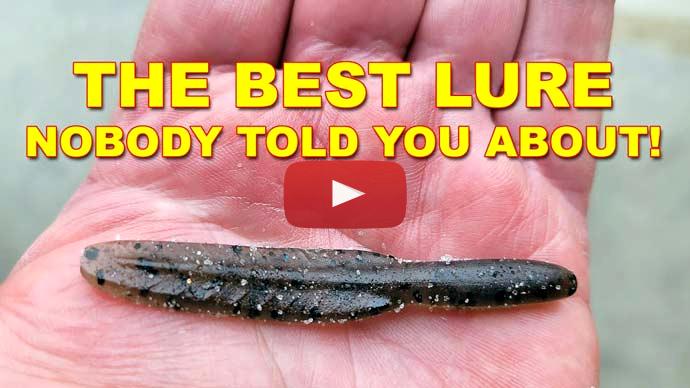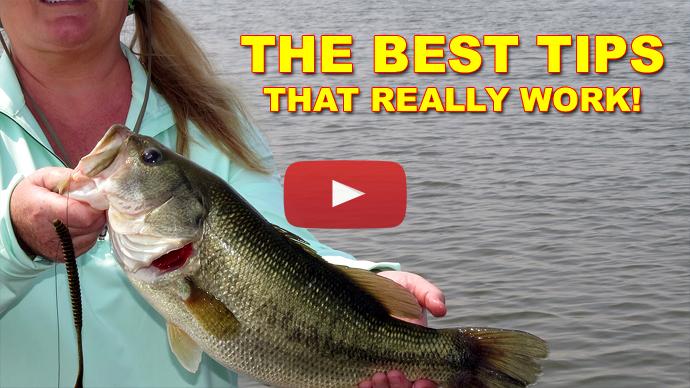You know, hair jigs have been thought of something that you use only in the wintertime. For good reason, they work really well in cold water situations. The coldest months of the year, hair jigs shine really well. However, a bunch of anglers in the northern part of the U.S. and in Canada, they don't wanna fish that jig just for one season of the year. And they figured out how to make hair jigs work throughout the year. And it's pretty cool. I wanna tell you about it today. First of all, I wanna talk about the rig, the line, the reel, the rod, all of that, plus the actual jigs and what you need to use. And then we're gonna talk about how to fish it.
So, let's dive right in. First of all, let's talk about the equipment you need. You're talking light jigs here, guys. These are like 3/32 to an 1/8-ounce jig head. It's really lightweight, so it's gonna be hard to throw on a bait caster. So, you're gonna need a spinning outfit. Specifically, you want like a medium light action rod, something like that, moderate action. What you want is a light tip. See how that bends like that? Real good light tip. That is what's gonna enable you to cast it really far. But also, these jigs have a real light wire hook on them. And so you don't want a heavy rod because that can easily pull out that little light wire hook, and you'll lose the fish. So, you need a rod that's got a limber tip on it for casting and for a lot of give during the fight with the fish. So, that's critical. You got to have that. About a 7-foot to 7’2” rod is what you want.
For the reel, about a size 2,000 or 20 reel. Small reel. Don't want a bigger. A little bit bigger reel, like a 2,500 or 3,000. You can go up to 25. There's nothing wrong about that. But the larger the reel it is, the more difficult it is to throw the light jigs. So, size 2,000 or 2,500 reel, perfect for your setup. For the line, I like to use 6-pound line. A lot of you guys are a little apprehensive about throwing that light line. So, let me give you a couple things here. First of all, this technique works exceptionally well in clear water, so you're not throwing it in dingy water. It's a sight-type lure. So, the lighter the line, the less visible it is. Plus, you're throwing it in open areas, not heavy cover. So, when you hook a fish, you pull them away from whatever structure is there and there's nothing to get hung up on or for their line to rub against. So, you can get away with 6-pound test. I like to use fluorocarbon line.
Personally, I'm a big fan of Seaguar Tatsu line. It's a little pricey, but it's very limber, casts extremely well, super sensitive. It works really well with these light jigs because the different kinds of lines, they can get a little wiry. Especially fluorocarbon make it a little hard to throw these light lures. So, Tatsu is what I like to use. Again, all fluorocarbon. I'm not tying braid to leader because braid has no give whatsoever. And when you're using these light wire hooks, that braid, because you're using it is apt. When you're fighting that fish, you can pull that hook out of that fish's mouth. So, in this case, the stretch of that fluorocarbon is a characteristic of fluorocarbon is a bonus. That's a plus. You gonna need that little bit of give when you're fighting that fish to keep him pinned and not getting that hook ripped out of his mouth.
So, if you don't feel comfortable throwing 6-pound, you can do 8, you can go up to 10. I wouldn't do any more than that. It gets really hard to cast at that point, but use 8. And if you feel like you can do it, 6 is even better. It even gives you more natural presentation as well. So, that's what I use for the line, the rod, and the reel.
Let's talk a little bit about the jigs themselves. These are really lightweight, small, little hair jigs. Okay? Like I said, 3/32nd to an 8th, really lightweight, small, all jigs. And the key thing about it is you wanna have marabou hair. The marabou gives it a more natural, realistic look in the water. It gives it more of a bait fish-type look that is critical to the success of this bait.
And for colors, by and large, you can get away with black. That is like the thing. Most anglers use black because, again, the way you're fishing, and we'll get into this in a second, but the fish are looking up at it and it's silhouette is what they're looking for. The black shows up best for that. However, some anglers really like using brown or green pumpkin. And those three colors are it. You don't need to go hog wild crazy buying a whole bunch of hair jigs. Just get black, green pumpkin, or brown and get them in like 3/32nd, up to an 8th, maybe 5/16, something like that, just right in that light area. And that's all you need, it's you're good to go.
So, let's talk a little bit about fishing it and how it works. What you wanna do is slowly swim this back in the middle of the water column. So, if you're in 10 feet of water, 5-feet, you're 15 feet of water, about 7, 7.5 feet right in that middle zone. And it's just a slow-reeling action. This is what trips up a lot of bass anglers. We're used to seeing a lot of vibration and we're used to feeling the resistance of the bait as we pull it through the water. We're used to imparting action by shaking the rod tip, or stop and go retrieve, something like that. You don't wanna do that with this lure. The beauty of it and the attraction of it is that it's very natural looking, it is non-threatening, it doesn't give off any unusual or unnatural signals to the bass, and that's what the appeal is.
As a matter of fact, a lot of bass, what they'll do is you'll see them in this clear water, you'll see them track the lure and follow it for a considerable distance before they even attack it, before they bite it. And I've done this, you see them tracking it and your instinct right away is if they're not biting it but following it, you do something different. Speed up the retrieve or kill it, do something to invoke that strike. Usually, that works with other lures, but with this one, for some reason, it spooks them. Nine times out of 10, they'll turn and go away. They won't bite it. So, resist the urge to impart any kind of action on it.
One critical element in fishing this is the hook set. Because you're using these are small diameter, small hooks. You don't wanna reef on it and cross the fish's eye like you're used to doing in bass fishing. It's a little bit different here. Like I said, the fish will track that bait. And usually what happens is when they grab it, they turn right away and they've already started to set the hook just on that alone. So, the hook set is more of just a quick pop or just a reel set. Just reel down and apply pressure and just give it a little pullback. That's all it needs. That super thin, super sharp wire hook will penetrate. If you yank any harder, you're likely to actually rip the lure right out of the fish's mouth. So, don't overpower them on the hook set, the fish does most of the work for you. But there's more to it than that.
First of all, you got to make long casts with it. And if you're having a difficult time making a long cast, you can pinch off a piece of Senko or a worm and slide it onto the shaft or the hook shaft of the jig. Just don't get it up to the bend of the hook because you're gonna make the bite of the hook smaller and you have less ability to pin that fish when you hook them. So, just a small little chunk on the shank of the hook and that will give it a little bit more weight, a little more bulk, and might make it a little bit easier for you to cast.
Now, really the key thing here about the retrieve is really the only modification that you make is going to be the speed of the retrieve. A moderate, slow retrieve is what you wanna start off with. But if for some reason the fish aren't biting, you either need to slow down or speed up. And this is when you change the weight of the jig. Because if you speed up with the same weight, what you're gonna do is the jig is going along and it's gonna pull up higher in the water column when you speed up on that. So, you need to add the weight, go to more of an 1/8-ounce jig head if you're gonna speed it up. So, you maintain it at that same level, right in the middle of the water column.
Conversely, if you're gonna slow down, well, now it's gonna sink down in the water column towards the bottom. You don't want that because the fish are looking up. They're gonna look at this bait as it goes by and they're gonna attack it that way. So, you lighten up on the jig head so you can slow down and still maintain it at that middle column depth without it sinking down. That's really the only adjustments that you make is just the speed of the retrieve. Very simple, very basic, super easy way to catch fish.
And instead of fishing a hair jig during the wintertime, these work really well when the fish are shallow, so pre-spawn through spawn. But even in the summertime, when fish are up shallow and feeding on bait fish, I like to fish this along rip wrap, along the face of a dam, or in bluffs, or rocky areas where there's algae on the rocks, where the bait fish get up there in the summertime, they're feeding on it. That brings the bass up shallow. And that's a perfect time to throw this hair jig, particularly in really clear waters.
Give it a try, guys. You're gonna love it. You're gonna catch a lot of fish, and it's a heck of a lot of fun. Hope that helps. For more tips and tricks like this, visit BassResource.com.



